Josephine Myrtle Corbin was born with a rare birth defect called polymelia, meaning born with extra limbs, in her case, she had 4 legs, 2 normal ones and 2 smaller ones that grew from her hips. But there was more to it. She also had 2 sets of reproductive organs and 2 pelvises. Because of this rare occurrence, she’s probably one of the few people in history considered wonders. Let’s delve into Myrtle’s story and discover her exceptional life milestones.Myrtle was considered a rare and remarkable case of human development.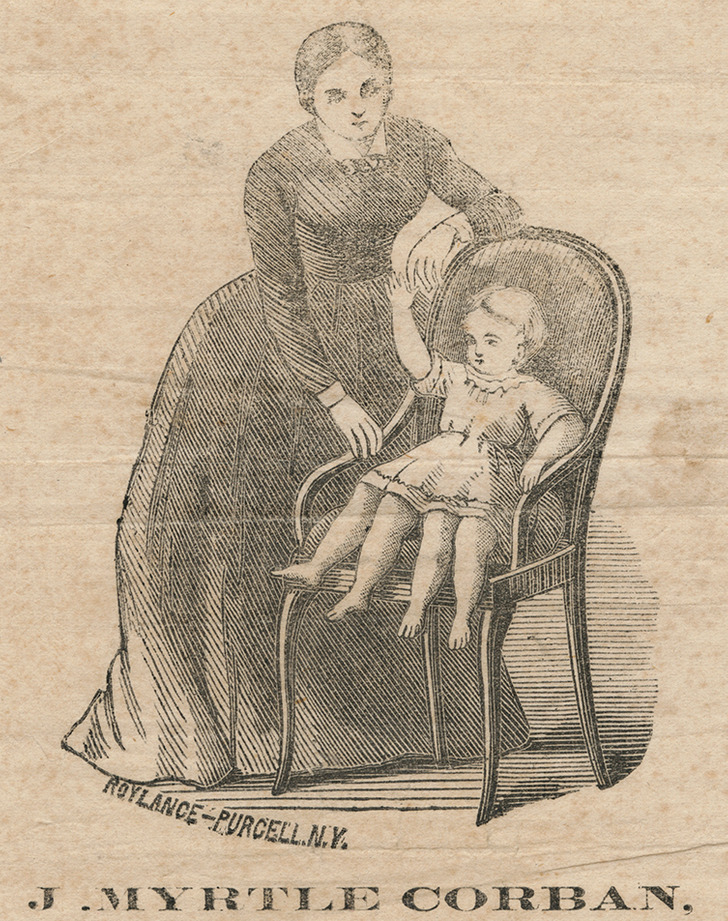
Josephine Myrtle Corbin, an American sideshow performer, came into the world in 1868 as a remarkable medical rarity. Affected by a condition known as dipygus, she possessed two lower bodies from the waist down. This unusual phenomenon occurred due to her body axis splitting during development, resulting in two separate pelvises side by side. Remarkably, her smaller inner legs were paired with one of her outer legs. While Myrtle could move her inner legs, but they were too weak to walk on.
Born in Tennessee to her parents, William and Nancy, Myrtle’s arrival brought both wonder and concern. At 25, her father, William, and 34-year-old mother, Nancy, welcomed the unique little Myrtle into their lives. Medical professionals noted that if Myrtle had been delivered breech, with her bottom first, it could have been potentially fatal for both her and her mother. Thankfully, Myrtle’s early days were promising, as she displayed signs of strength, weighing 10 lb (4.5kg) just 3 weeks after her birth.
Myrtle’s father was facing financial hardship and had to think of ways to support his growing family.

© Charles Eisenmann (1855-1927) / Wikimedia Commons, © Public domain, © Palette.fm
At the age of 5 weeks, people had the opportunity to visit William Corbin and marvel at his four-legged daughter for a small fee. As the years passed, Myrtle grew up accustomed to the constant stares and astonishment from those who encountered her rare condition. Her inner legs never fully developed, her right foot was clubbed, and both of the smaller legs had 3 toes on each foot.
Over the following decade, William took Myrtle on a journey across the country, where she participated in fairs, sideshows, and dime museums. By the time she turned 14, she had achieved success and managed to secure a lucrative contract paying her an unusually high salary of $250 per week.
The four-legged girl, Myrtle, had a younger sister named Ann, who fortunately did not suffer from any birth defects.
Myrtle married when she was 18 and later became a mother.

© James R. Applegate (1849–1910), Philadelphia / Wikimedia Commons, © Public Domain, © Palette.fm
As Myrtle entered adulthood, she grew weary of the constant attention she received due to her condition. At 18, she decided to marry James Bicknell, a medical student, after which she retired from her performing career. Interestingly, her fame had inspired others to attempt to fake her unique deformity, but all of these impostors were eventually exposed as frauds.
A year into their marriage, Myrtle experienced troubling symptoms like fever, nausea, headaches, and side pains. Concerned, she sought medical attention, and to her disbelief, the doctor revealed that she was pregnant on her left side. Myrtle skeptically responded, saying, “If it had been on my right side, I would come nearer believing you are correct.” The pregnancy proved challenging for her health, and doctors even advised her to consider an abortion due to the severity of her illness. However, Myrtle managed to recover swiftly.
Over the following years, James and Myrtle welcomed seven more children into their family. Tragically, only 5 of them survived infancy, 4 daughters and a son.
© Unknown author / Wikimedia Commons, © Public Domain
The family lived a quiet life until their 5 children reached adulthood. Then Myrtle re-entered the show business. In 1909, when Myrtle was 41, she was a part of Huber’s Museum exhibit, appearing as The Four-Legged Girl from Cleburne, Texas. She often dressed her 4 legs in matching shoes and socks, to the audience’s delight. She was making $450 per week at the time.
In 1928, Myrtle developed a skin infection on her right leg, and the doctor diagnosed her with erysipelas or a strep infection. A week later, on May 6th, 1928, Myrtle passed away. Her casket was covered in concrete, and family members kept watch until it was fully cured to prevent grave robbers from stealing her remains.
Almost a century later, Josephine Myrtle Corbin Bicknell continues to inspire others by proving that even in the 19th century, a woman could forge a successful career and become a mother all at once.
Minha madrasta veio ao meu casamento com um vestido branco, dizendo que ela “também merece atenção” – então meu marido lhe deu uma lição de verdade
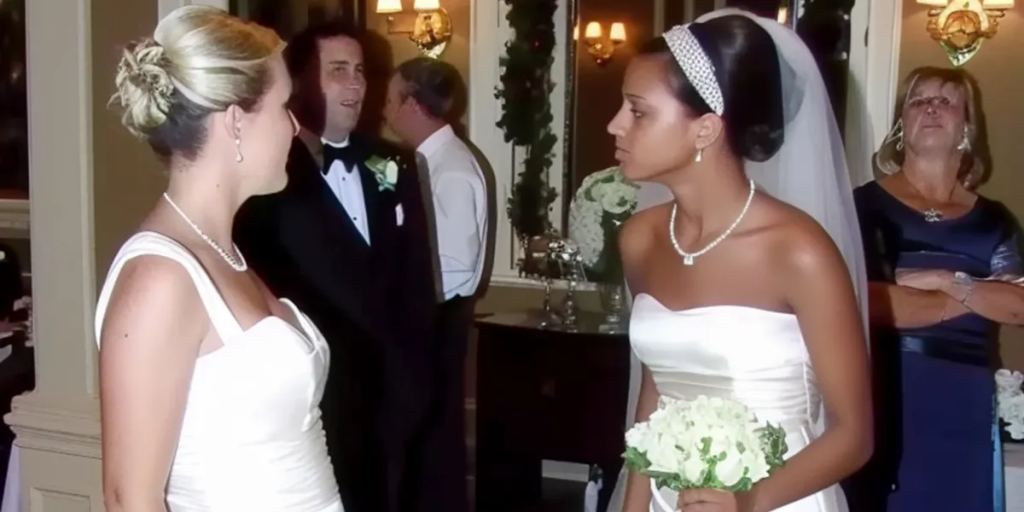
Quando a madrasta de Alexandra chegou ao seu casamento em um vestido branco, insistindo que ela merecia atenção, Alexandra se preparou para o caos. Mas seu marido tinha um plano para virar o jogo de uma forma que ninguém esperava.
“Essas flores precisam ser perfeitas”, disse Linda, arrumando-as com cuidado exagerado. “Afinal, é um grande dia para a família.”

Uma senhora idosa rodeada de flores | Fonte: Pexels
Sentei-me à mesa de jantar, tomando meu chá e tentando manter a calma.
Meu pai sorriu para ela. “Linda tem um ótimo olho para essas coisas”, ele disse.
Forcei um sorriso. “Eles parecem legais, Linda”, respondi.

Uma jovem mulher | Fonte: Midjourney
Linda, minha madrasta, entrou na minha vida quando eu tinha dez anos, depois que mamãe faleceu. Ela amava ser o centro das atenções, e hoje não foi diferente.
Ela se agitou com as flores, certificando-se de que cada pétala estava no lugar certo. Seus movimentos eram dramáticos, como se ela estivesse no palco. Eu me perguntei qual papel ela tentaria desempenhar no casamento.
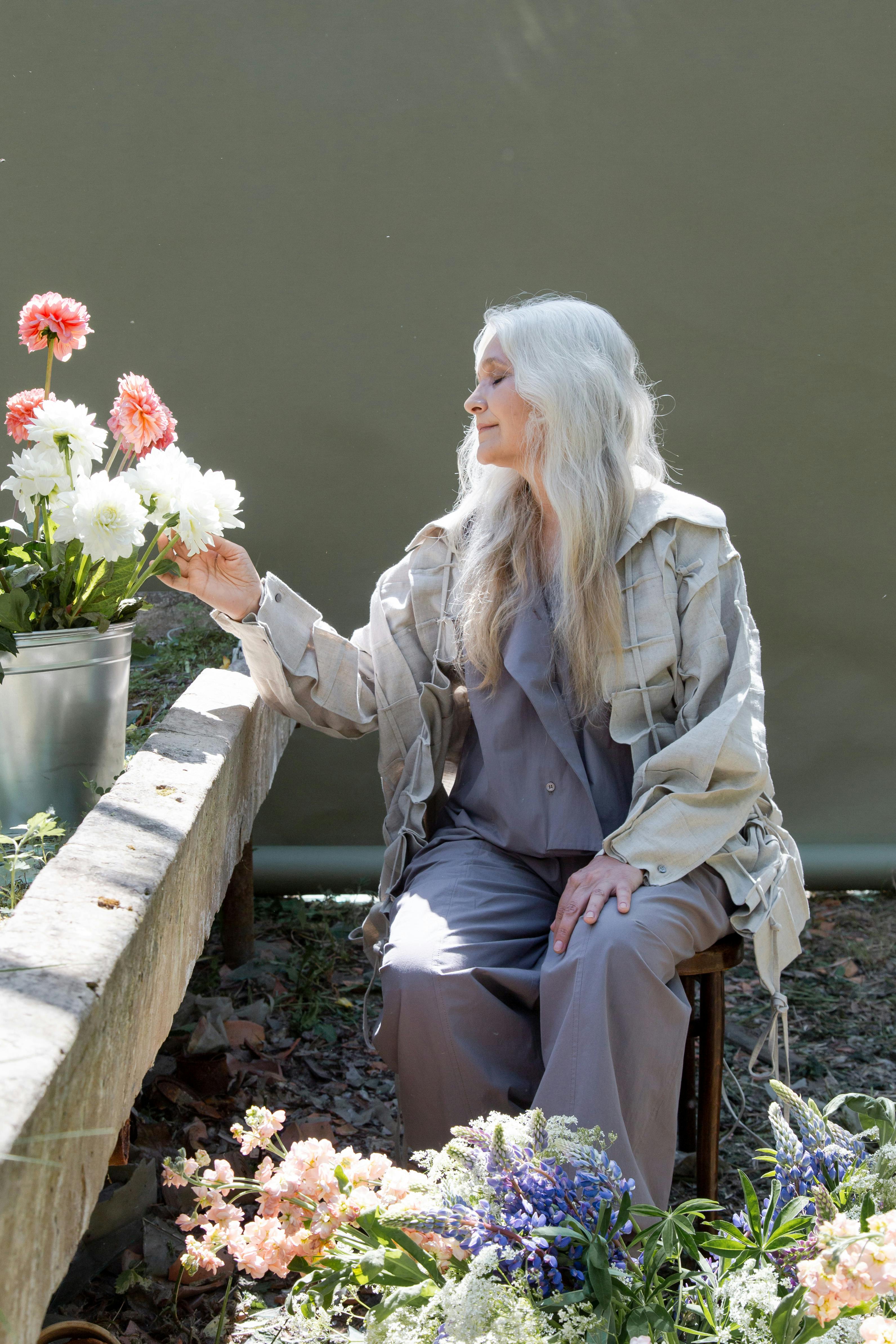
Uma mulher idosa posando com flores | Fonte: Pexels
“Você está animado com o casamento, pai?”, perguntei, esperando mudar de assunto.
Ele assentiu, seus olhos brilhando. “Muito, Alexandra. Vai ser um dia lindo.”
Linda entrou na conversa: “Sim, e tudo tem que ser perfeito. Não é todo dia que temos um evento tão importante.”

Arranjos de casamento | Fonte: Midjourney
Eu assenti, mas minha mente estava em outro lugar. Eu sabia que Linda encontraria uma maneira de fazer o dia ser sobre ela. Ela sempre encontrava.
Lembrei-me de aniversários e feriados em que ela conseguia ser a estrela do show, deixando-me nas sombras.
Enquanto Linda continuava a se preocupar com as flores, minha preocupação aumentou. Eu queria aproveitar o casamento, mas com Linda por perto, era sempre um desafio.

Uma mulher idosa | Fonte: Midjourney
“Você precisa de ajuda, Linda?”, ofereci, tentando ser educada.
Ela me dispensou. “Não, não, querida. Tenho tudo sob controle.”
“Tudo bem”, eu disse, forçando um sorriso. “Vou me despedir, pai. Tenho que ir a algum lugar.”

Uma mulher idosa posando confiantemente | Fonte: Midjourney
Encontrei-me com Sarah, minha melhor amiga e madrinha de honra, no escritório do planejador de casamentos.
“Por que a noiva está tão triste?”, ela perguntou, me envolvendo num abraço.
“Acho que estou nervoso.”
“Não fique; você terá o melhor dia! Agora vamos, estamos ficando tarde.”

Duas amigas compartilhando um abraço | Fonte: Pexels
Entramos no escritório da planejadora de casamentos Grace.
“Bem, uh, sua madrasta pediu para sentar na primeira fila e insistiu em fazer um discurso durante a recepção, Alexandra”, ela disse, erguendo os olhos de suas anotações.
Fiquei atordoado. Linda e eu tínhamos conversado sobre isso. Como ela pôde?

Uma mulher preocupada | Fonte: Pexels
“Isso não costuma ser reservado para a mãe ou o pai da noiva?”, perguntou Sarah, levantando uma sobrancelha.
Grace assentiu. “Sim, tradicionalmente, a primeira fila é para os pais da noiva. Já que seu pai estará lá e você escolheu homenagear sua falecida mãe reservando um lugar para ela, Linda tecnicamente não deveria estar naquele lugar.
“Além disso, precisamos manter algum decoro e respeito pelas tradições familiares. Este casamento é muito significativo, especialmente com a homenagem à sua mãe.”

Cadeiras em um casamento | Fonte: Pexels
Suspirei, sentindo a frustração familiar aumentar. “Ela sempre tem que fazer tudo sobre si mesma. Aposto que ela tem alguma grande performance em mente!”
Sarah se inclinou para mais perto. “Precisamos estar preparados para o que quer que ela esteja planejando.”
Grace olhou para mim com uma expressão preocupada. “Como você gostaria de lidar com isso, Alexandra?”

Um planejador de casamento | Fonte: Midjourney
Pensei por um momento. “Podemos explicar a ela que a primeira fileira é reservada para minha mãe e meu pai? Talvez sugerir que ela se sente na segunda fileira?”
“Isso parece razoável”, Grace concordou. “Vou falar com ela. E sobre o discurso?”
Balancei a cabeça. “Eu realmente não quero que ela faça um discurso. É para ser uma homenagem à minha mãe e uma celebração do casamento. Ela vai fazer isso só sobre ela mesma.”

Uma mãe e uma filha se beijando | Fonte: Pexels
Sarah assentiu. “Podemos pedir para outra pessoa falar, se necessário. Talvez um de nós ou alguém do lado da sua mãe?”
“Essa é uma boa ideia”, eu disse, me sentindo um pouco mais à vontade. “Vamos garantir que os discursos sejam significativos e respeitosos.”
Grace fez algumas anotações. “Eu vou cuidar disso. Nós vamos garantir que tudo corra bem.”

Uma mulher tomando notas | Fonte: Pexels
Quando saímos do escritório de Grace, Sarah apertou meu braço.
“Não se preocupe, Alex. Nós cuidamos disso. Linda não vai estragar seu dia.”
Eu assenti, esperando que ela estivesse certa.

Uma mulher sendo consolada por uma amiga | Fonte: Pexels
Quando voltei para o nosso apartamento, precisei compartilhar minhas preocupações com Tom.
“Linda está determinada a roubar a cena”, eu disse, deixando minha bolsa perto da porta. “Ela está dando um discurso na recepção e insistiu em sentar na primeira fila.”
Tom envolveu seus braços em volta de mim. “Nós lidaremos com isso juntos. Não se preocupe.”
Franzi a testa e me inclinei em seu abraço.

Um casal se abraçando | Fonte: Midjourney
“Não é só isso”, eu disse, me afastando dele. “Ela tem um jeito de transformar tudo em um espetáculo. Ela não é minha mãe de verdade, mas ela sempre se impôs em papéis destinados à minha mãe. Queremos honrar minha mãe mantendo seu lugar na primeira fila. Tenho medo que ela faça do nosso casamento algo sobre ela.”

O rosto de uma senhora idosa | Fonte: Pexels
Tom sorriu tranquilizadoramente. “Confie em mim. Eu tenho um plano. Deixe-a ter seu momento. Vai dar tudo certo.”
“Que tipo de plano?”, perguntei, curioso.

Uma mulher sentada em uma cadeira e posando | Fonte: Pexels
Ele beijou minha testa. “Só confie em mim. É uma surpresa. Mas eu prometo, isso manterá o foco onde deveria estar — em nós e na memória da sua mãe.”
Suspirei, me sentindo um pouco melhor, mas ainda ansiosa. “Espero que sim. Só quero que tudo corra bem. Linda pode ser tão imprevisível.”
Tom apertou minha mão. “Eu sei. Mas nós conseguimos. Estamos juntos nisso.”

Uma mulher segurando a mão de um homem | Fonte: Pexels
Eu assenti, tentando relaxar. “Obrigado, Tom. Eu realmente aprecio isso.”
“Sempre que quiser, querida”, ele disse, me dando um sorriso tranquilizador. “Agora, vamos aproveitar nossa noite e não nos preocupar com Linda por um tempo.”
Sorri de volta, sentindo-me grata por seu apoio.
Logo chegou o dia do casamento.

Uma noiva sorrindo para seu vestido de noiva em ambientes fechados | Fonte: Pexels
Eu estava animado e nervoso.
Enquanto eu ainda estava de roupão me arrumando, Sarah entrou no quarto, com o rosto pálido.
“Você não vai acreditar”, ela disse, me puxando para a janela.
Olhei para fora e vi Linda surgindo em um vestido de noiva branco longo.

Uma mulher idosa posando em seu vestido de noiva | Fonte: Midjourney
“O que…” Ok, isso era algo que eu não esperava. Como ela ousa?
“Linda, o que você está fazendo? Você não pode usar branco no meu casamento!” Eu corri até ela, incapaz de esconder minha fúria.
“Oh, querida”, ela sorriu, sem demonstrar nem um pingo de arrependimento. “Você é jovem, Alexandra. Você tem a vida inteira pela frente. Esta pode ser minha última chance de me sentir uma noiva novamente. Eu mereço essa atenção.”

Uma senhora idosa sorridente em um vestido de noiva | Fonte: Midjourney
Senti minha raiva aumentando, mas Tom me puxou de lado. “Confie em mim, resolveremos isso depois”, ele sussurrou com um sorriso travesso.
“Mas Tom, como ela pôde?”
“Confie em mim, ok?”, ele disse, e eu cedi.
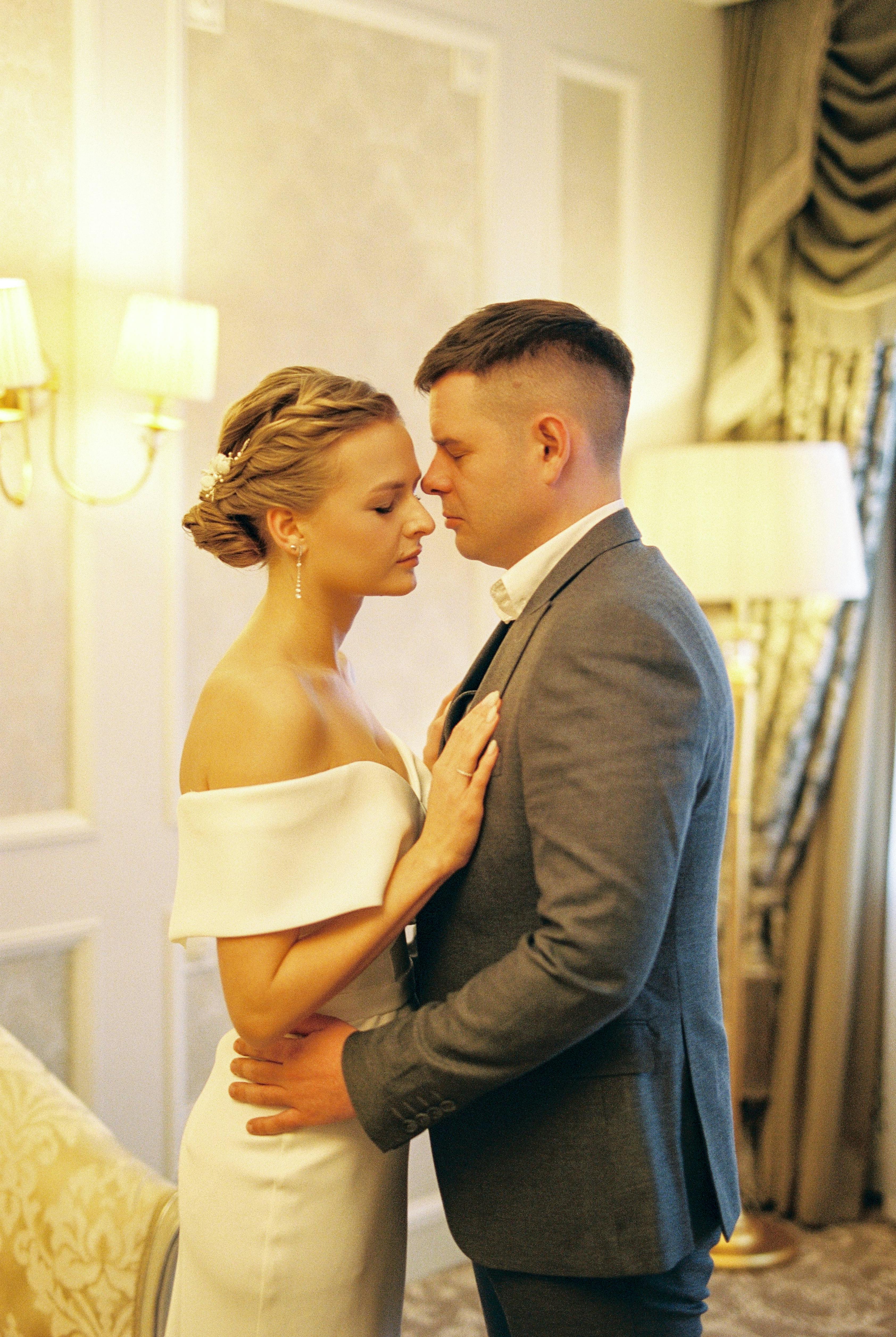
Um casal recém-casado | Fonte: Pexels
A cerimônia prosseguiu, com Linda sentada na primeira fila, aproveitando seu holofote roubado. Grace tinha um olhar desamparado no rosto, então estava claro que Linda tinha conseguido o que queria.
Eu estava fervendo por dentro, mas confiava em Tom.
Conforme a cerimônia prosseguia, tentei me concentrar nos votos e no momento. Olhei para Tom, que me deu um aceno tranquilizador. Mas toda vez que eu via a expressão presunçosa de Linda, minha fé no plano de Tom vacilava.

Uma noiva preocupada | Fonte: Pexels
Quando chegou a hora dos discursos, prendi a respiração. Linda se levantou, pronta para assumir. Mas antes que ela pudesse falar, Tom pegou o microfone.
“Senhoras e senhores, antes de continuarmos, gostaria de compartilhar um vídeo especial em homenagem à falecida mãe de Alexandra.”
As luzes diminuíram e uma linda montagem da minha mãe apareceu na tela.

Uma noiva olhando para uma tela | Fonte: Midjourney
Fotos, vídeos e mensagens sinceras encheram a sala. Lágrimas encheram meus olhos, e os convidados ficaram visivelmente comovidos. A expressão de Linda mudou de presunção para choque.
Quando o tributo terminou, Tom olhou para mim com um sorriso cúmplice. “Este dia é sobre honrar sua mãe e nosso amor, Alex. Ninguém pode tirar isso de você.”
Então ele olhou para Linda. “Linda, você poderia se juntar a nós aqui em cima?” ele perguntou.

Um noivo falando no microfone | Fonte: Midjourney
Linda parecia presunçosa, pensando que estava prestes a ser homenageada.
Enquanto ela caminhava em direção ao palco, Tom continuou: “Linda sempre foi uma estrela por mérito próprio, então hoje decidimos deixá-la brilhar ainda mais.”
Outra apresentação de slides começou a passar. As primeiras fotos eram inocentes o suficiente, mostrando Linda em seu vestido branco de vários ângulos no casamento. Mas então, a reviravolta de Tom veio.

Um noivo feliz | Fonte: Midjourney
A próxima foto mostrava Linda entrando furtivamente na minha suíte nupcial naquela manhã.
Ela foi flagrada pela câmera experimentando meu véu de noiva, girando com um buquê que ela havia tirado dos arranjos florais.
A sala engasgou e o rosto de Linda ficou vermelho.
Ela tentou manter a calma, mas Tom não havia terminado.

Uma mulher de cabelos grisalhos usando um véu | Fonte: Pexels
“Espere, Linda, ainda não terminamos”, ele disse, gesticulando para o DJ.
De repente, os alto-falantes tocaram uma gravação de Linda falando ao telefone com uma amiga, se gabando de seu plano de me ofuscar.
“Esta princesinha precisa aprender seu lugar. Eu já esperei tempo suficiente para ter meu momento”, sua voz ecoou pelo corredor.

Uma noiva idosa e zangada | Fonte: Midjourney
A multidão ficou chocada, e algumas pessoas até vaiaram. Tom envolveu seus braços em volta de mim e sussurrou: “Eu disse que tinha tudo sob controle.”
Mas a surpresa não acabou.

Um casal recém-casado feliz | Fonte: Midjourney
Tom havia arranjado para que o ex-marido de Linda fosse o palestrante convidado. Ele subiu ao palco, compartilhando histórias sobre as palhaçadas passadas de Linda, mostrando a todos sua verdadeira natureza.
O resultado? Linda, com o rosto vermelho e encurralada, saiu do corredor o mais silenciosamente que pôde. Tom e eu compartilhamos um sorriso, sabendo que lhe ensinamos uma lição do seu jeito. Ela estava no centro das atenções como era desejada, mas por todos os motivos errados.
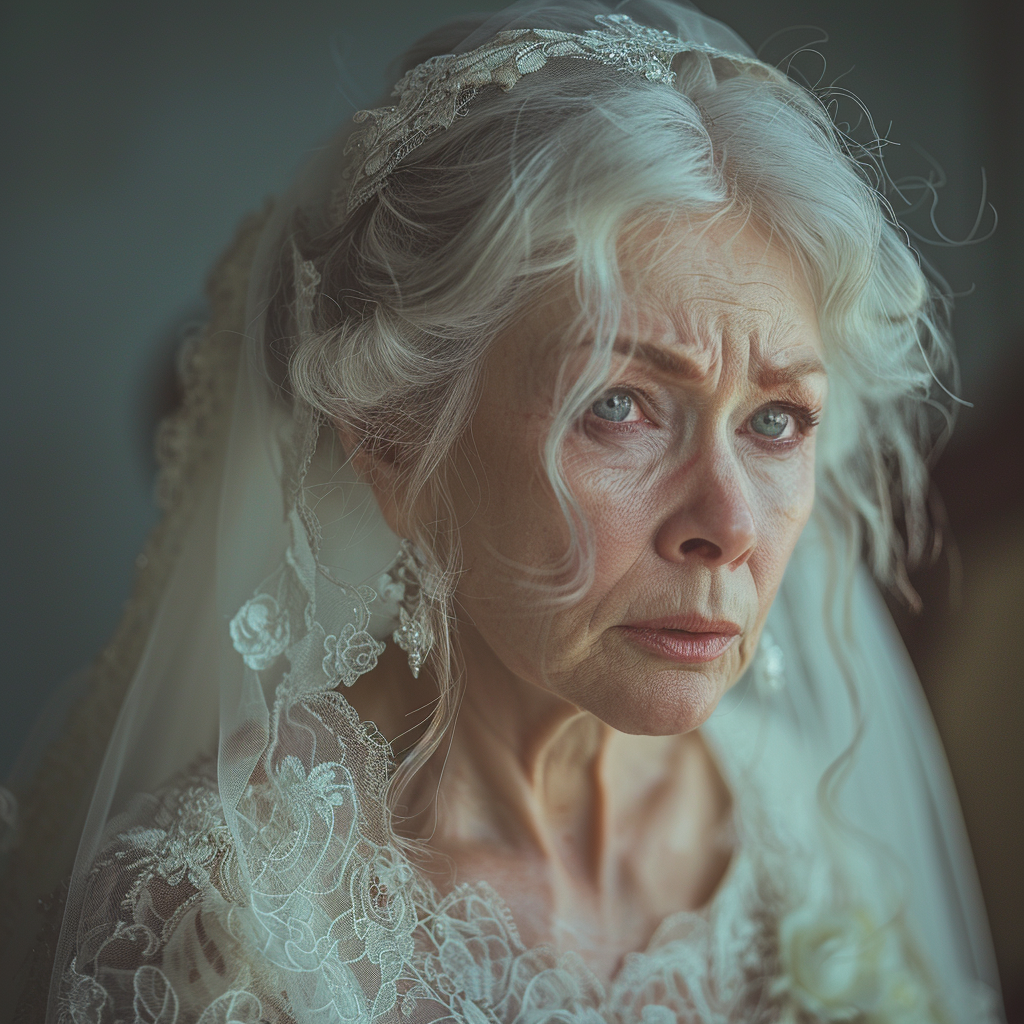
Uma idosa chorando | Fonte: Midjourney
Você também teve que dar uma lição para alguém no seu casamento?
Se você gostou desta história, aqui vai outra : Quando o pai de Hannah entrou dançando na festa de aniversário dela com sua melhor amiga no braço, ela estava determinada a fazê-lo pagar. Mal sabia ele que o plano de Hannah era inesperadamente virar o jogo na festa de formatura dela.

Uma jovem em sua festa de formatura | Fonte: Midjourney
Este trabalho é inspirado em eventos e pessoas reais, mas foi ficcionalizado para fins criativos. Nomes, personagens e detalhes foram alterados para proteger a privacidade e melhorar a narrativa. Qualquer semelhança com pessoas reais, vivas ou mortas, ou eventos reais é mera coincidência e não intencional do autor.
O autor e a editora não fazem nenhuma reivindicação quanto à precisão dos eventos ou à representação dos personagens e não são responsáveis por nenhuma interpretação errônea. Esta história é fornecida “como está”, e quaisquer opiniões expressas são as dos personagens e não refletem as opiniões do autor ou da editora.



Leave a Reply